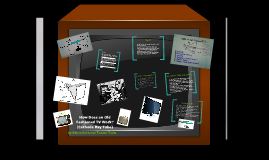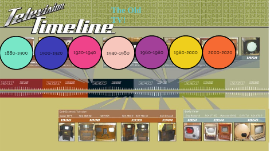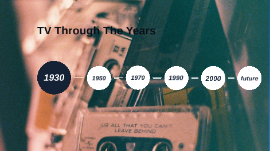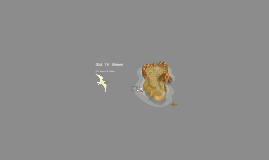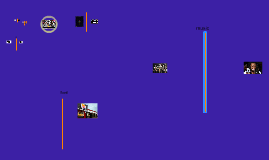Old Fashioned TV
Transcript: How Does an Old Fashioned TV Work? (Cathode Ray Tube) by Andrea Stock and Taulant Toska The CRT The CRT consists of a vacuum tube with a narrow end and a wide end The narrow has an ion gun that shoots out a series of charge particles of electricity (the beam) A series of electromagnets guide particles to specific points on the wide end (the screen) CRTs are heavy due to the large amount of glass they contain, which makes them inefficient Works Cited: Brain, Marshall. "HowStuffWorks "Cathode Ray Tube"." HowStuffWorks "Electronics". N.p., n.d. Web. 11 Mar. 2013. <http://electronics.howstuffworks.com/tv3.htm>. "Chemistry Learning Center Lecture Demos/ The Department of Chemistry at the University of Illinois at Urbana-Champaign." Chemistry at Illonois. N.p., n.d. Web. 11 Mar. 2013. <http://www.chem.uiuc.edu/clcwebsite/cathode.html#>. "How Does a Television Work? (with pictures)." wiseGEEK: clear answers for common questions. N.p., n.d. Web. 11 Mar. 2013. <http://www.wisegeek.com/how-does-a-television-work.htm>. How does the CRT Work in an Old Fashioned TV? How Does the CRT Project an Image on a TV? 5. There is no way to steer the beams, so steering coils create magnetic fields inside the tube, and the beam responds 6. The coil creates fields that moves the beam horizontally and vertically 7. Phosphors filter the energy of the beam to strike the exact point on the screen, and pixels create a colored image There is one beam for black and white, and 3 for color for the phosphors 1. The anode, being made of protons, attracts electrons pouring out of the cathode 2. The stream of electrons is focused by a focusing anode into a tight beam and then accelerated by an accelerated anode 3. The tight, high speed beam of electrons flies through the vacuum in the tube and hits the flat screen at the other end of the tube 4. The screen in coated with phosphor, which glows when struck by the beam The Cathode Ray Tube The "cathode" is a heated filament, much like that of a light bulb, in a glass "tube" An "anode" is the positive terminal, and the "cathode" is the negative terminal The "ray" is a stream of electrons that pour off a heated cathode into the vacuum TVs used to rely on CRTs to display images, but plasma and LCD are much more popular these days Old Fashioned TV: Cathode Ray Tubes






